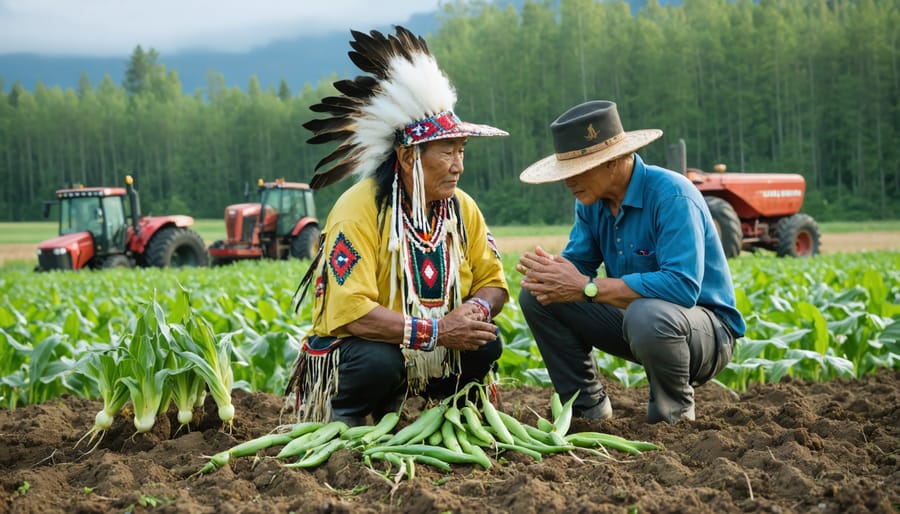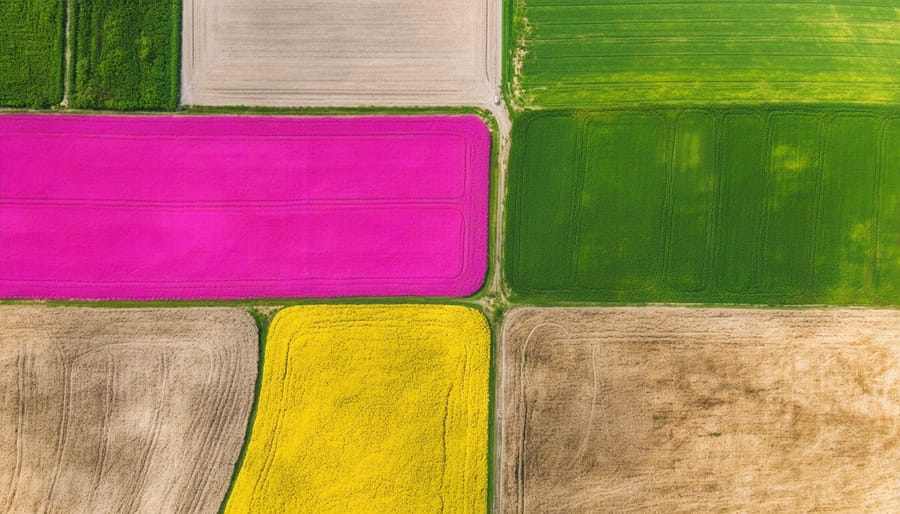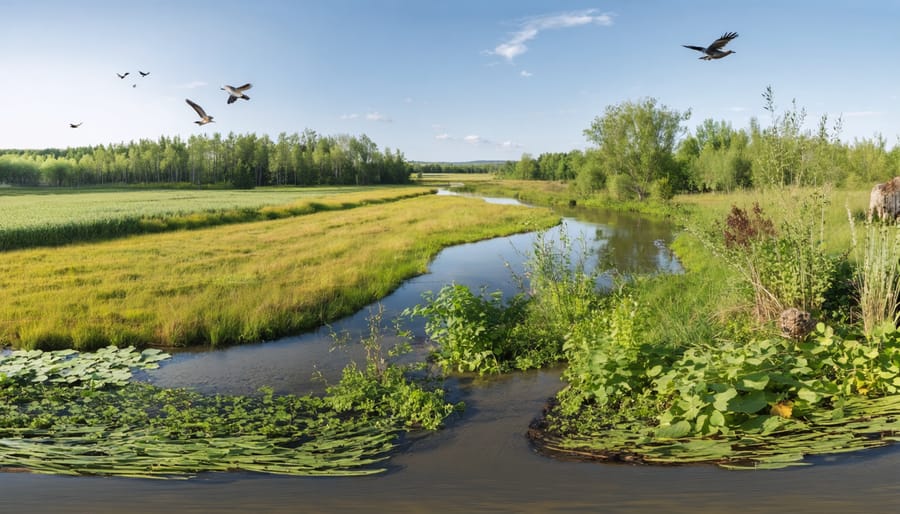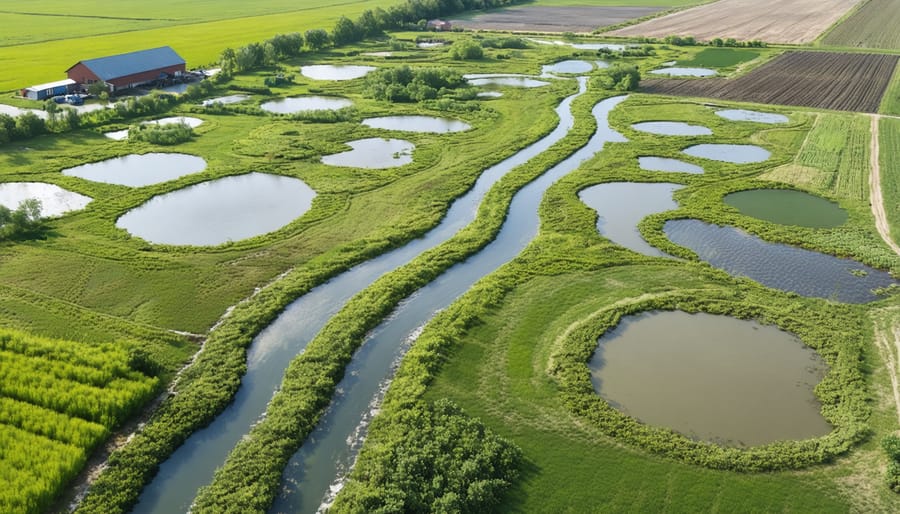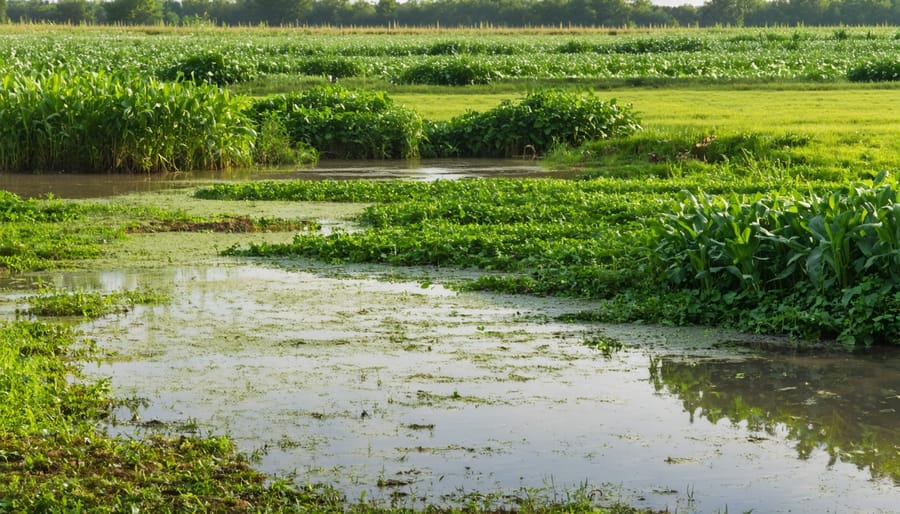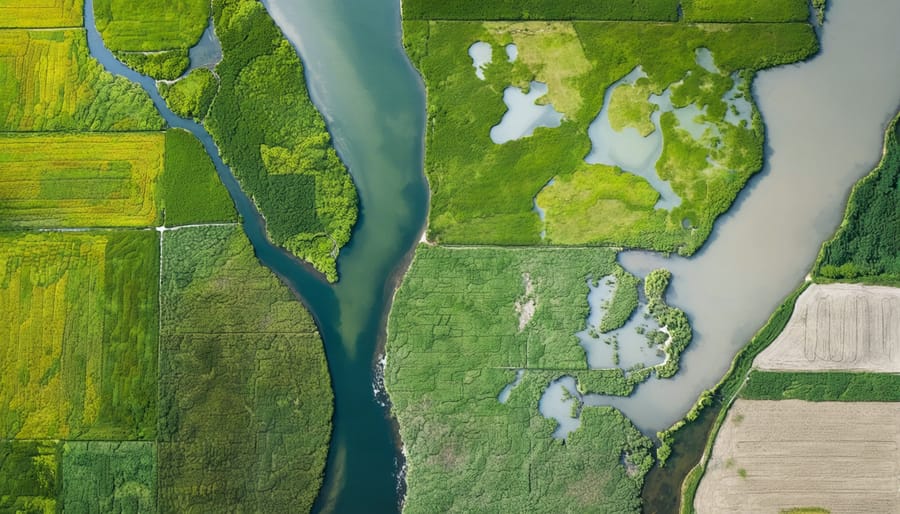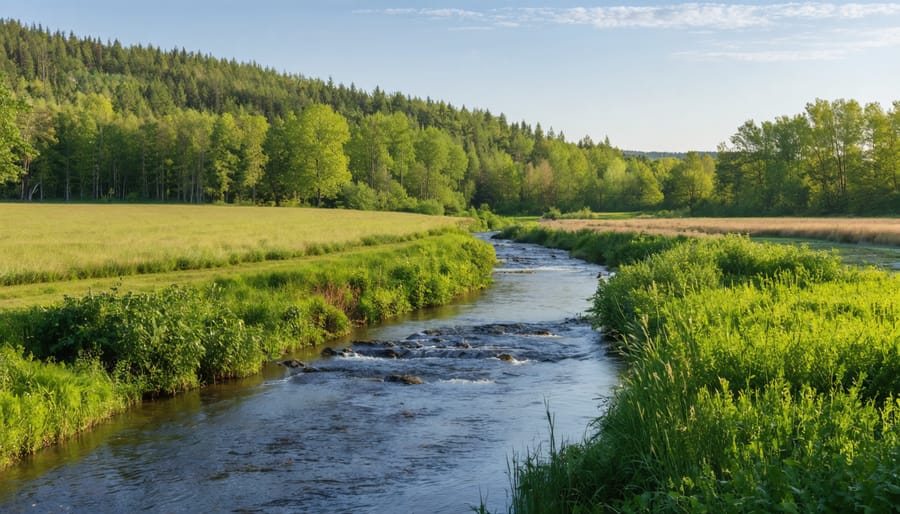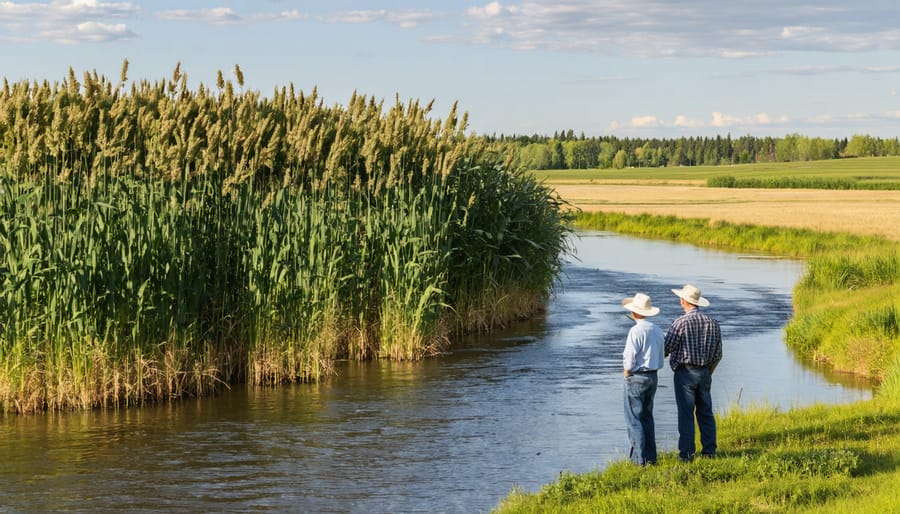Indigenous knowledge systems represent centuries of time-tested wisdom passed down through generations of First Nations, Métis, and Inuit communities across Canada’s diverse landscapes. These sophisticated systems combine practical agricultural techniques, environmental stewardship, and cultural traditions that have sustained communities for millennia. From the Three Sisters companion planting method of the Haudenosaunee to the advanced fish wheel technologies of Pacific Coast nations, these knowledge systems demonstrate deep understanding of local ecosystems, seasonal cycles, and sustainable resource management.
Modern Canadian agriculture stands to gain tremendous value from these time-honored practices, particularly as farmers face increasing climate challenges and soil health concerns. In Alberta alone, traditional Indigenous knowledge has proven invaluable in understanding drought-resistant crops, natural pest management, and soil conservation techniques uniquely suited to Prairie conditions. This knowledge isn’t just historical—it’s a living, evolving system that continues to adapt and offer solutions to contemporary agricultural challenges.
By bridging traditional wisdom with modern farming practices, we create opportunities for more resilient, sustainable agriculture that honors the land’s legacy while securing its future. These systems offer practical insights into biodiversity, water conservation, and crop rotation that remain remarkably relevant to today’s agricultural needs.
What Are Indigenous Knowledge Systems?
Key Characteristics of Indigenous Agricultural Knowledge
Indigenous agricultural knowledge systems are built on generations of careful observation and deep connection to the land. These systems recognize the intricate relationships between soil health, weather patterns, and plant cycles, viewing farming as part of a larger ecological web rather than an isolated activity.
A key characteristic is the emphasis on seasonal understanding, where farming activities align with natural cycles. Many Indigenous communities in Alberta traditionally use environmental indicators, such as the appearance of certain birds or the flowering of specific plants, to determine optimal planting times.
The knowledge is typically passed down through oral traditions and hands-on experience, incorporating stories, ceremonies, and practical demonstrations that connect cultural values with agricultural practices. This approach ensures that farming methods are both sustainable and culturally meaningful.
Another distinctive feature is the focus on biodiversity and companion planting. Traditional Indigenous farming often involves growing multiple crops together, understanding how different plants support each other’s growth while maintaining soil health. This holistic perspective extends beyond crop production to include wildlife management and water conservation, creating resilient agricultural systems that have sustained communities for thousands of years.
The Role of Oral Tradition in Agricultural Practices
In indigenous communities across Canada, agricultural knowledge has been preserved and shared through a rich tradition of oral storytelling, passing vital farming wisdom from one generation to the next. Elders serve as living libraries, sharing detailed observations about soil conditions, weather patterns, and crop relationships that have been refined over centuries of practical experience.
This oral tradition often takes the form of seasonal stories, songs, and ceremonies that coincide with important agricultural events like planting and harvesting. For example, in Alberta, many Indigenous communities traditionally time their planting with specific bird migrations or flowering patterns, information that has been preserved through carefully crafted narratives.
These oral teachings go beyond simple instructions, incorporating holistic understanding of ecosystems and environmental stewardship. They often include practical knowledge about companion planting, natural pest management, and sustainable harvest techniques. Modern farmers are increasingly recognizing the value of this traditional knowledge, particularly as it relates to drought resistance and soil health management.
The effectiveness of oral tradition lies in its interactive nature, allowing for immediate clarification and adaptation to local conditions while maintaining core agricultural principles that have stood the test of time.
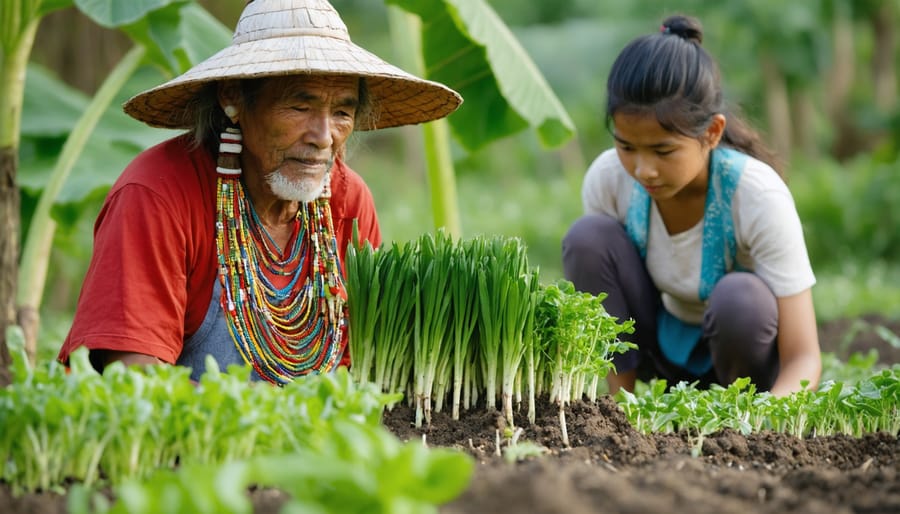
Indigenous Agricultural Practices in Alberta
Traditional Crop Management Techniques
Indigenous peoples across Canada have long practiced sophisticated crop management techniques that demonstrate a deep understanding of biodiversity in farming. One of the most significant practices is the Three Sisters method, where corn, beans, and squash are planted together in a mutually beneficial relationship. The corn provides a natural trellis for the beans, while the beans fix nitrogen in the soil, and the squash’s broad leaves protect the soil moisture and suppress weeds.
Traditional crop rotation cycles typically follow four to seven-year patterns, allowing fields to regenerate naturally while maintaining soil fertility. Many First Nations communities in Alberta practice careful observation of soil conditions, using natural indicators like specific plant growth patterns to determine optimal planting times.
Companion planting extends beyond the Three Sisters, incorporating medicinal plants and natural pest deterrents like sage and sweetgrass alongside food crops. These arrangements help protect valuable crops while supporting beneficial insects and maintaining ecological balance.
Soil health management traditionally involves the use of natural amendments like fish remains and wood ash, practices still relevant today. Indigenous knowledge also emphasizes the importance of minimal soil disturbance, a principle that aligns with modern conservation agriculture techniques.
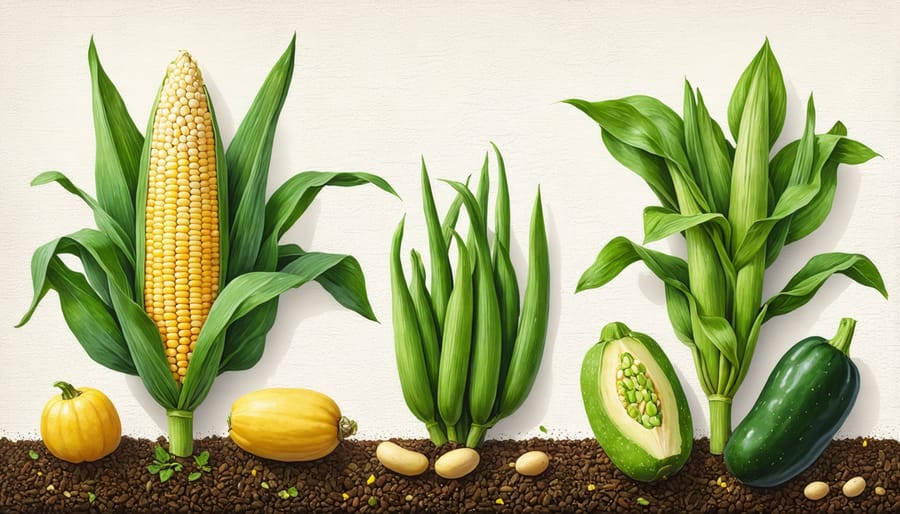
Water Conservation Methods
Indigenous water conservation methods demonstrate remarkable efficiency through time-tested practices that many Alberta farmers are now rediscovering. Traditional Indigenous communities developed sophisticated water management systems that work in harmony with natural landscapes and local climate patterns.
One notable practice is the creation of small-scale water catchment systems, where natural depressions in the land are enhanced to collect snowmelt and rainfall. These systems, known as “buffalo wallows” in some Indigenous communities, help maintain soil moisture throughout the growing season while providing natural irrigation.
The Three Sisters planting method, still relevant today, combines corn, beans, and squash in a way that maximizes water retention. The corn provides shade, reducing evaporation, while the broad squash leaves act as living mulch, helping to preserve soil moisture. This companion planting approach typically requires 30% less water than conventional single-crop systems.
Indigenous knowledge also emphasizes the importance of riparian zone management. Traditional practices include maintaining natural vegetation along waterways and creating small brush dams to slow water flow, reducing erosion and improving water absorption into the soil. These techniques have shown particular success in southern Alberta’s semi-arid regions, where water conservation is crucial.
Modern farmers implementing these methods report water usage reductions of up to 40% while maintaining crop yields. The integration of these traditional practices with current farming operations demonstrates how ancient wisdom can address contemporary challenges in agricultural water management.
Integrating Indigenous Knowledge with Modern Agriculture
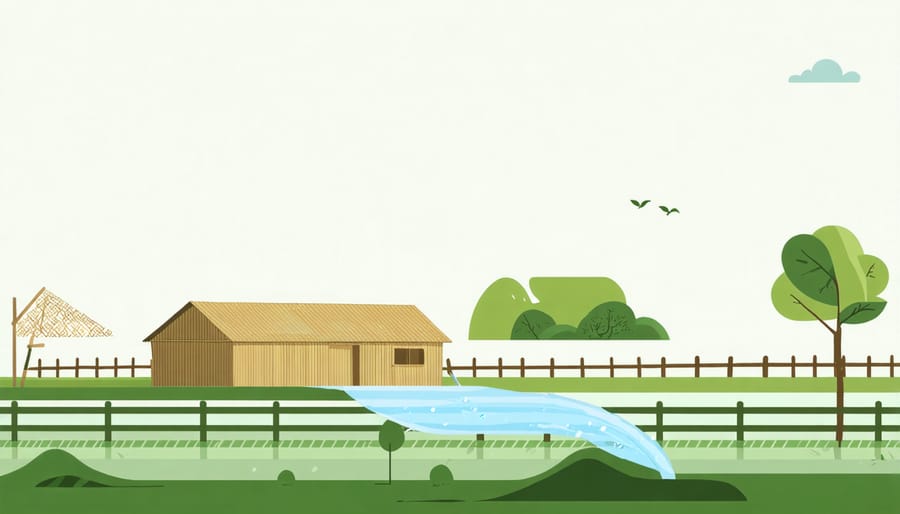
Success Stories from Canadian Farms
The Running Deer Farm near Red Deer, Alberta, demonstrates how incorporating Indigenous knowledge has transformed their operation. Owner Sarah Thompson partnered with local Cree elders to implement traditional companion planting techniques, resulting in a 30% increase in soil fertility and reduced pest problems. Their Three Sisters garden system, growing corn, beans, and squash together, has become a model for sustainable agricultural practices.
In Manitoba, the Prairie Sky Farm collective has successfully integrated traditional Indigenous water management techniques. By implementing strategic wetland preservation based on ancestral knowledge, they’ve enhanced their drought resilience while supporting local wildlife populations. Their water conservation methods have reduced irrigation needs by 40% during dry seasons.
The Eagle’s Nest Community Farm in Saskatchewan showcases how Indigenous crop rotation principles can revitalize soil health. Working with Knowledge Keepers, they’ve adopted a seven-year rotation cycle that includes traditional plants and modern crops. This approach has eliminated the need for synthetic fertilizers while maintaining competitive yields.
These success stories share common elements: respectful collaboration with Indigenous communities, patience in implementing new methods, and careful documentation of results. Each farm has found that combining traditional knowledge with modern techniques not only improves soil health and biodiversity but also strengthens community connections and ensures long-term sustainability.
Practical Implementation Steps
To begin implementing indigenous knowledge systems on your farm, start by connecting with local Indigenous communities through established agricultural networks or your regional farming association. Approach these relationships with respect and openness to learning, recognizing that knowledge sharing is a two-way process.
Document your land’s natural patterns, including wildlife movements, seasonal changes, and weather patterns. This observation-based approach aligns with traditional Indigenous practices and can complement modern climate-resilient farming methods.
Consider implementing these practical steps:
– Map your property’s water sources and drainage patterns
– Record seasonal wildlife patterns and their impact on crops
– Identify native plant species and their traditional uses
– Practice companion planting based on Indigenous wisdom
– Integrate natural pest management techniques
– Adopt soil conservation methods that minimize disturbance
Start small with a test plot where you can experiment with these practices. Document your results and adjust your approach based on what works for your specific context. Many Alberta farmers find success by gradually expanding these methods across their operations.
Remember that implementing indigenous knowledge systems is an ongoing journey of learning and adaptation. Join local farmer networks that focus on traditional agricultural practices to share experiences and learn from others who are on similar paths.
Indigenous knowledge systems offer a wealth of time-tested agricultural wisdom that can significantly benefit Canadian farmers and our broader agricultural community. By embracing these traditional practices alongside modern farming methods, we’re seeing remarkable improvements in soil health, water conservation, and crop resilience across Alberta and beyond.
The integration of indigenous agricultural knowledge has demonstrated that sustainable farming isn’t just about environmental stewardship – it’s also about building more profitable and resilient farm operations. From companion planting techniques that naturally manage pests to water management strategies that have sustained communities for generations, these practices offer practical solutions to many of our current agricultural challenges.
Looking ahead, the potential for indigenous knowledge systems in Canadian agriculture is immense. As we face increasing climate variability and the need for more sustainable farming practices, these time-honored methods provide valuable insights for adaptation and innovation. The successful cases we’re seeing in Alberta’s farming communities prove that traditional knowledge can effectively complement modern agricultural science.
By continuing to learn from and implement indigenous agricultural practices, we’re not only preserving valuable traditional knowledge but also creating a more sustainable and productive future for Canadian agriculture. The path forward involves respectful collaboration between indigenous knowledge holders and the farming community, leading to farming practices that are both environmentally sound and economically viable for generations to come.

